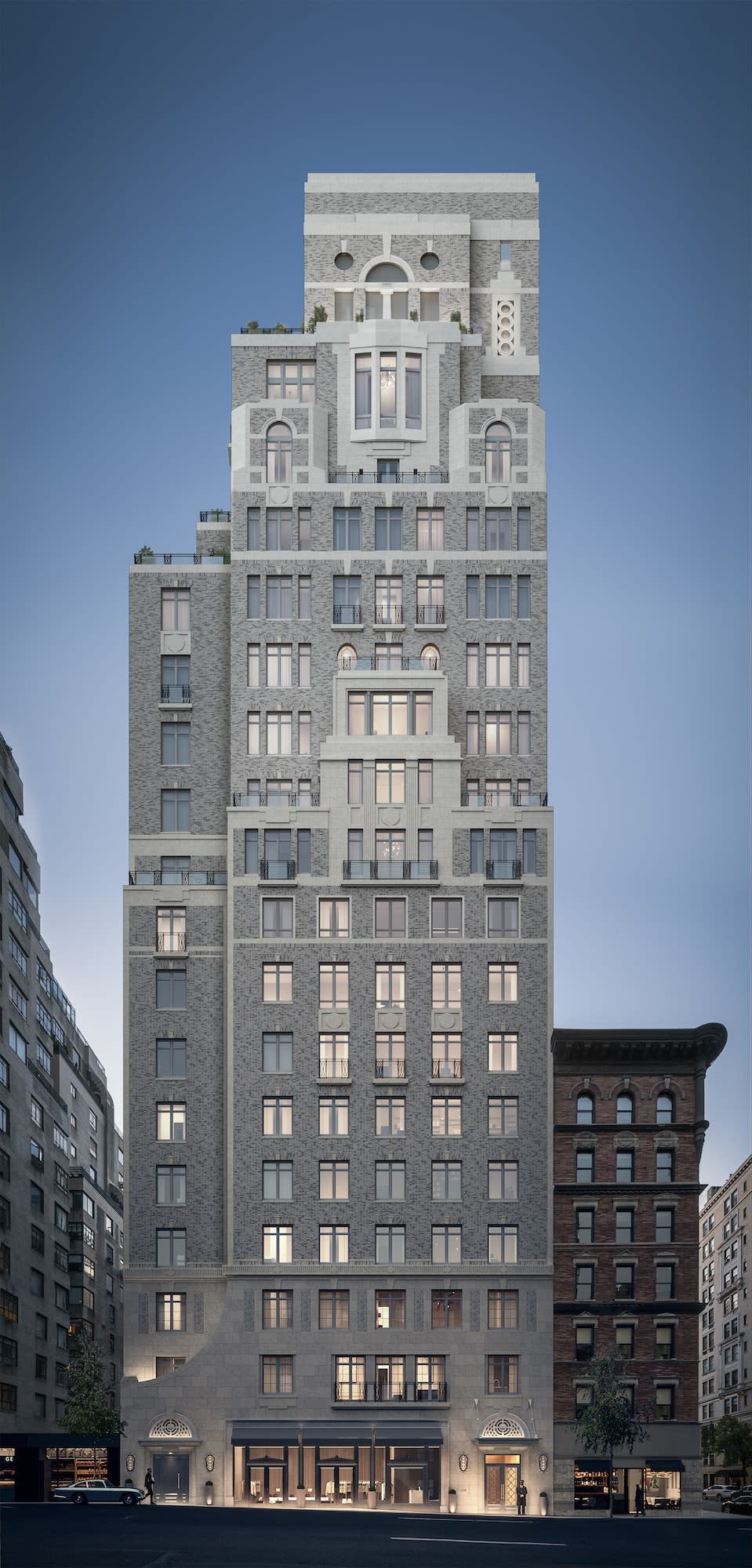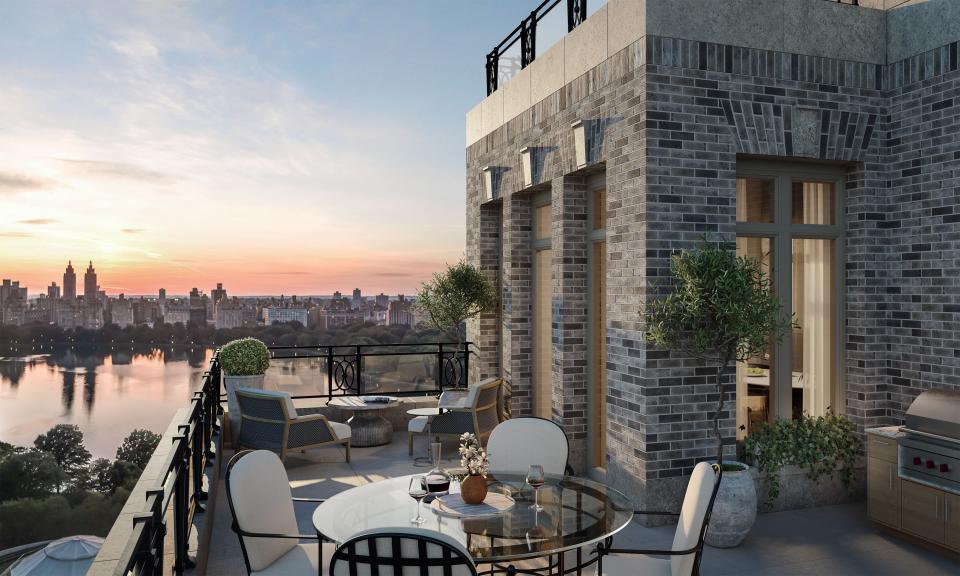Robert A.M. Stern Set to Launch His Most Distinctive Residential Project
Even the most casual architecture observers will likely recognize a Robert A.M. Stern Architects–designed residential building. There’s the style—a glorious melding of classic and cosmopolitan. Then there are the heights—inching close to 1,000 feet in the case of 220 Central Park South and nearly 800 feet at 520 Park Avenue, which features Manhattan's highest balconies.
There are also the materials—creamy limestone-clad facades that evoke a sense of glamour and timelessness at buildings such as 520 Park Avenue, 30 Park Place, and 15 Central Park West. And, of course, the prices: some of the most stratospheric in the world including the most expensive apartment ever sold in the U.S.— a $238 million four-floor penthouse aerie at the Stern-designed 220 Central Park South that went into contract last year.

Now Robert A.M. Stern Architects (RAMSA) is set to launch what could be the architect’s most distinctive residential project yet—1228 Madison Avenue. A bijoux building in Manhattan’s Carnegie Hill, the development houses a mere 15 cooperatives tucked into a striking tower featuring limestone at the base and a tri-tone blend of gray brick with cast-stone accents above.
Inside, there are surprisingly contemporary interiors created by AD100 designer Kelly Behun, best known for her recent collaborations with everyone from The Rug Company to Hudson Valley Lighting. “This is my first residential building,” enthused Behun this week just as 1228 Madison Avenue was about to launch sales. “But pairing the project with Robert Stern felt super compelling and really just sealed the deal.”

At first glance, Stern and Behun might seem like an odd pairing—what with his commitment to timelessness and tradition, and her whimsical embrace of color and craft. But 1228 Madison is uniquely positioned to maximize what both talents do best. Each of the two- to four-bedroom homes there are large—14 full-floor units and a duplex penthouse that elegantly blends into the building's crown, itself composed of a series of setbacks.
“The crown feels quite romantic and the setbacks reveal a series of outdoor terraces,” says RAMSA partner Paul L. Whalen, veteran of now-iconic RAMSA buildings including 15 Central Park West, 520 Park Avenue, and 20 East End Avenue. “The duplex feels like its own house in the sky.” Indeed, with its small unit number and extreme sense of privacy—residents literally have no neighbors on the same floor—Whalen describes the building as a sort of “vertical village…[where] some houses are smaller, some larger, and it all just fits together.”

Inside, Behun has infused the residences with equal doses of refined materials and whimsical design. Her touches are both subtle and dramatic: A soaring 18-foot living room, for instance, is anchored by a dramatic arch that leads to an alfresco terrace and fireplace. Accenting it all are Behun-helmed flourishes including chevron oak floors. Meanwhile, in the kitchens, Behun embedded a slim ribbon of oak into Portuguese-marble center islands and white cabinets.
“The wood adds a strip of warmth to the kitchen’s entire perimeter,” says Behun. Those chevron oak floors also appear in the kitchen, “which really transforms it into an extension of the other living spaces.”

Whalen says the building’s distinctive architecture was both inspired by and meant to hold its own among Madison Avenue’s surprisingly impressive trove of iconic design. Not only are elegant Baroque and Gothic buildings found on the avenue, “it’s also one of the world’s great shopping streets,” he says, noting that 1228 took many of its design cues from the great English architect Sir John Soane. “It’s a historic neighborhood and our building fits into this on the outside, with a more modern feel from Behun on the inside.”
Although 1228 Madison was envisioned before the COVID-19 pandemic, its final design and layouts conform to the current era’s new style of living. Along with the security and privacy of only one residence per floor, those floors have “lots of windows and cross ventilation,” Whalen says, to keep the air safe and clean.
While 1228 Madison Avenue’s location close to Central Park and prime Upper East Side schools will clearly appeal to families, Behun says the neighborhood—where she lived years ago—is actually far cooler than it might first appear. “There is so much going on there architecturally, especially the nearby Guggenheim Museum,” she notes. “So some apartments will clearly appeal to families with children,” she added, “but upstairs could just as likely be some fascinating, jet-setting man of mystery.”
Originally Appeared on Architectural Digest

